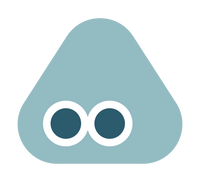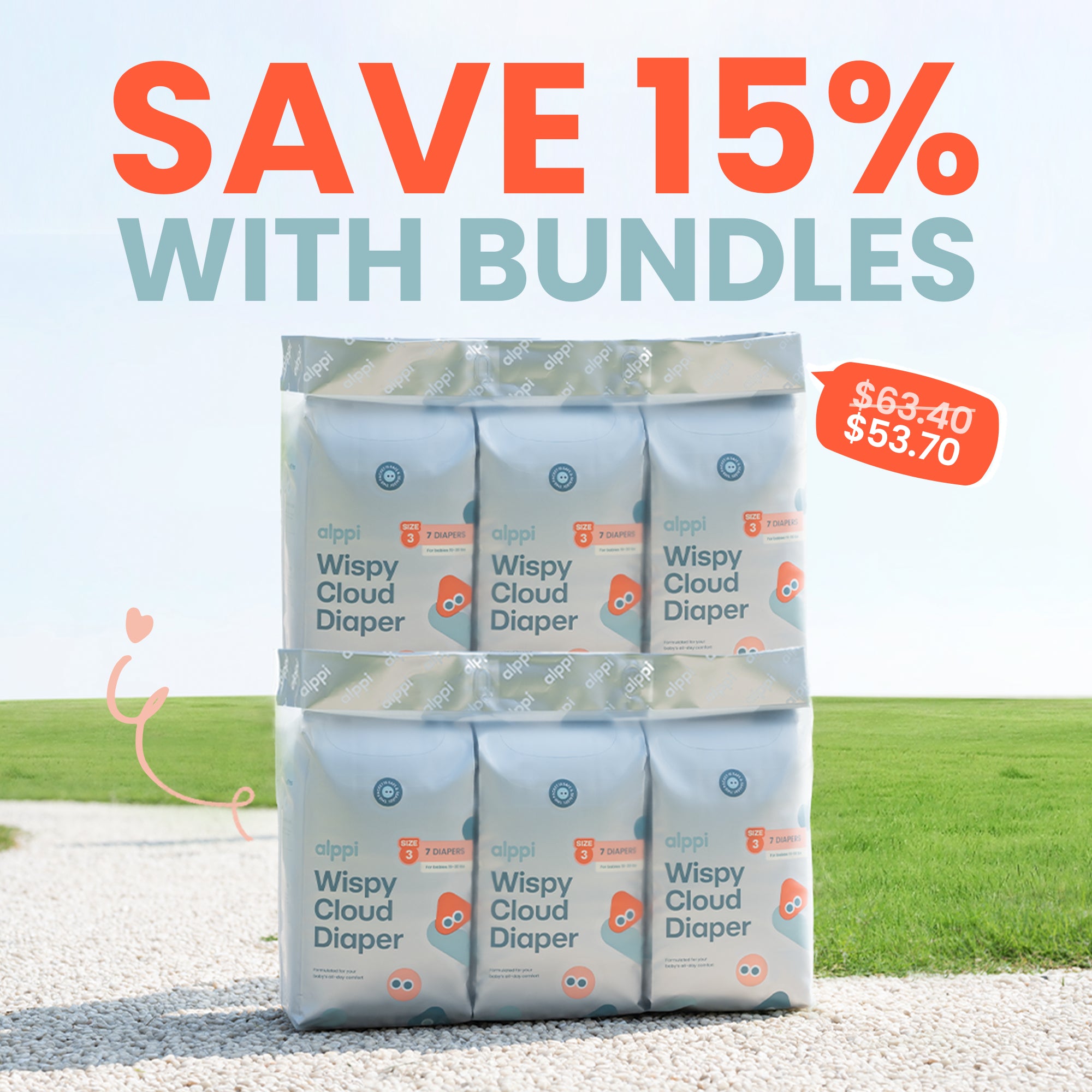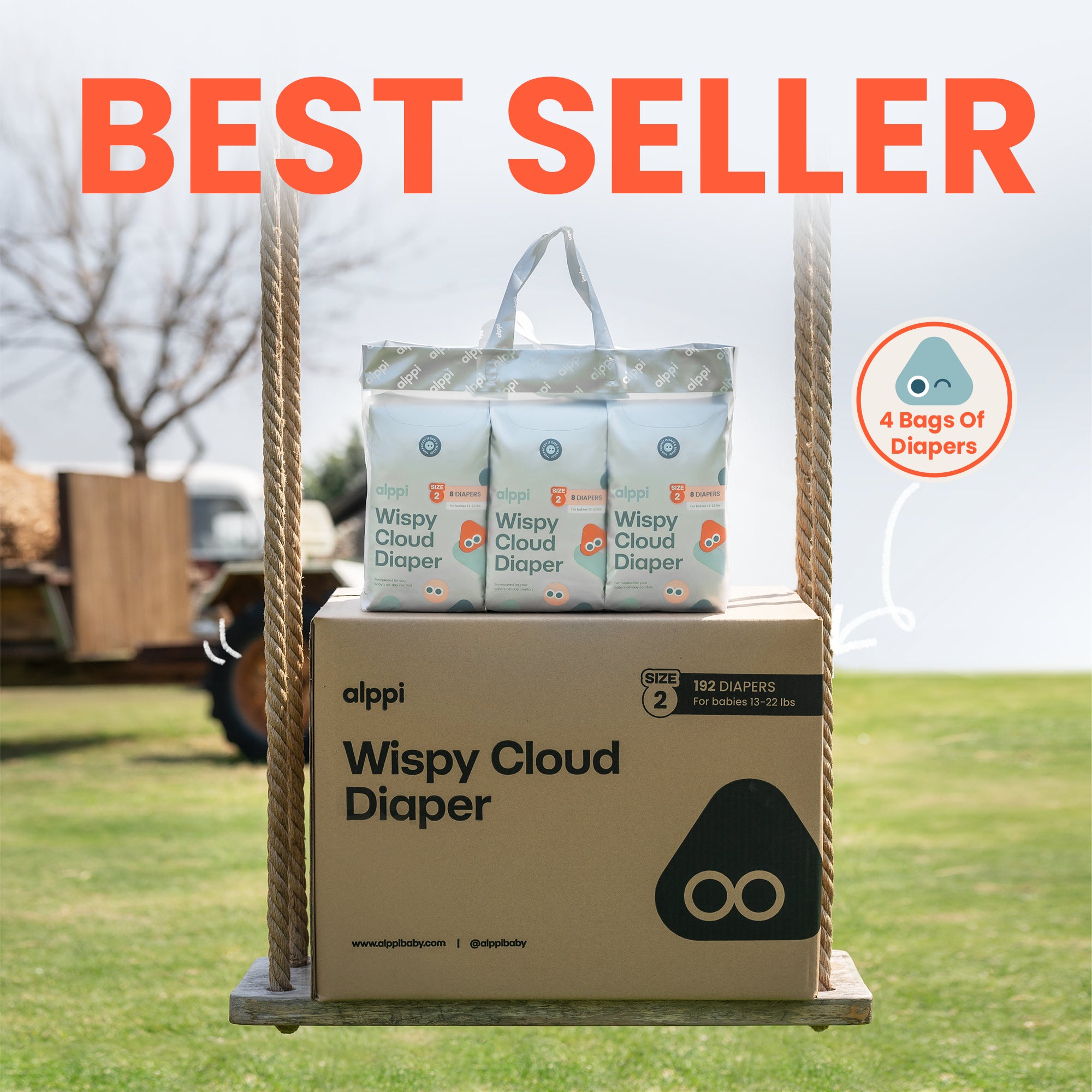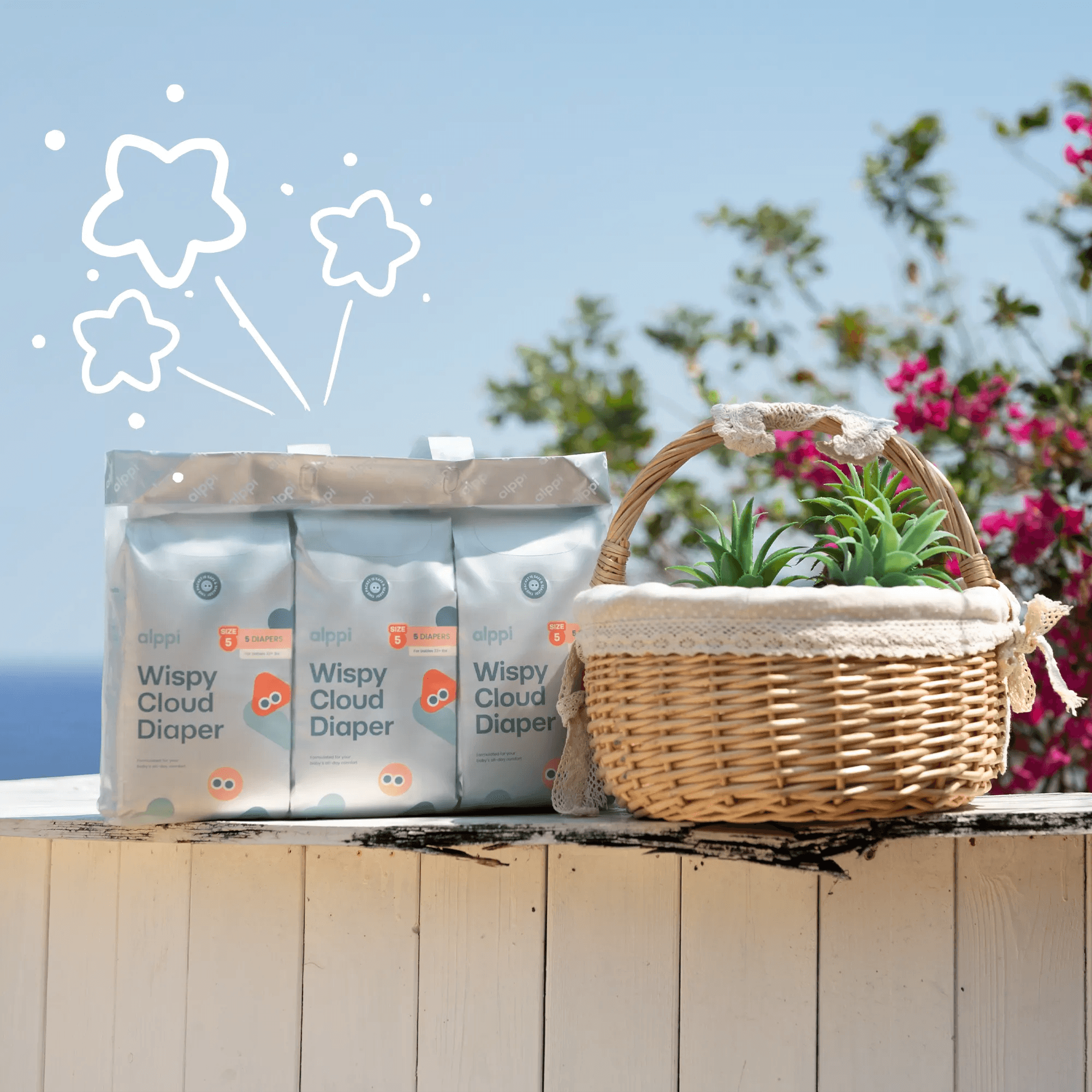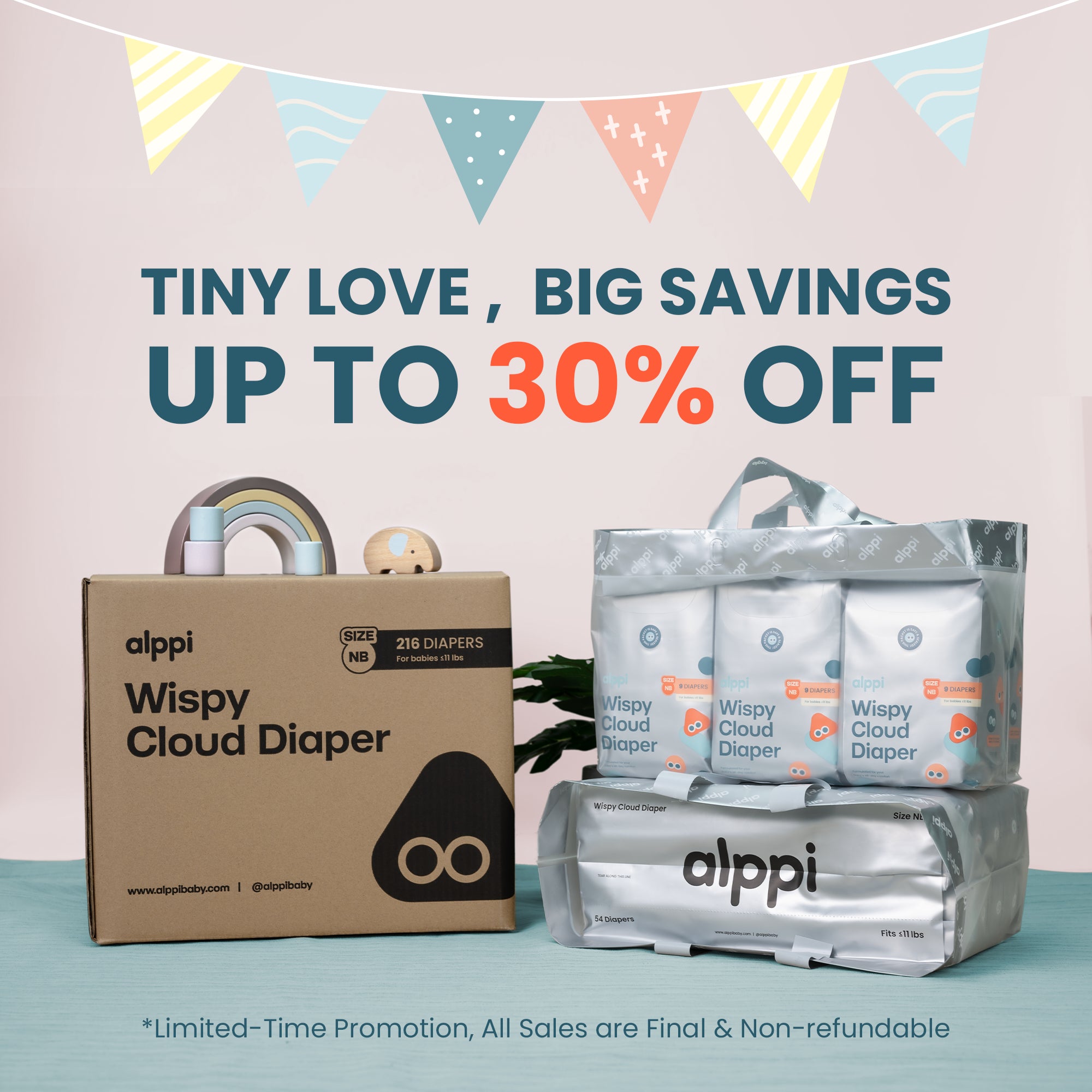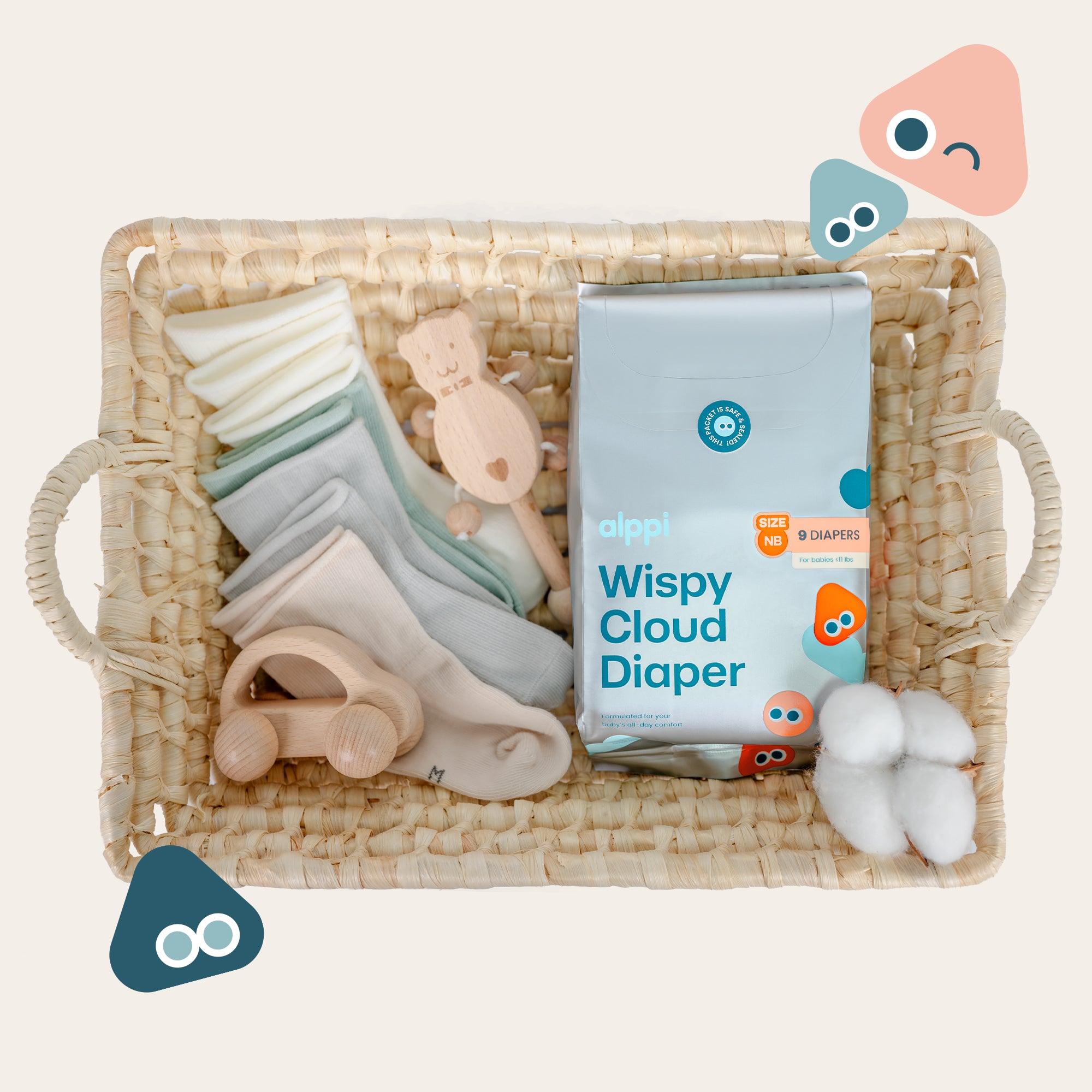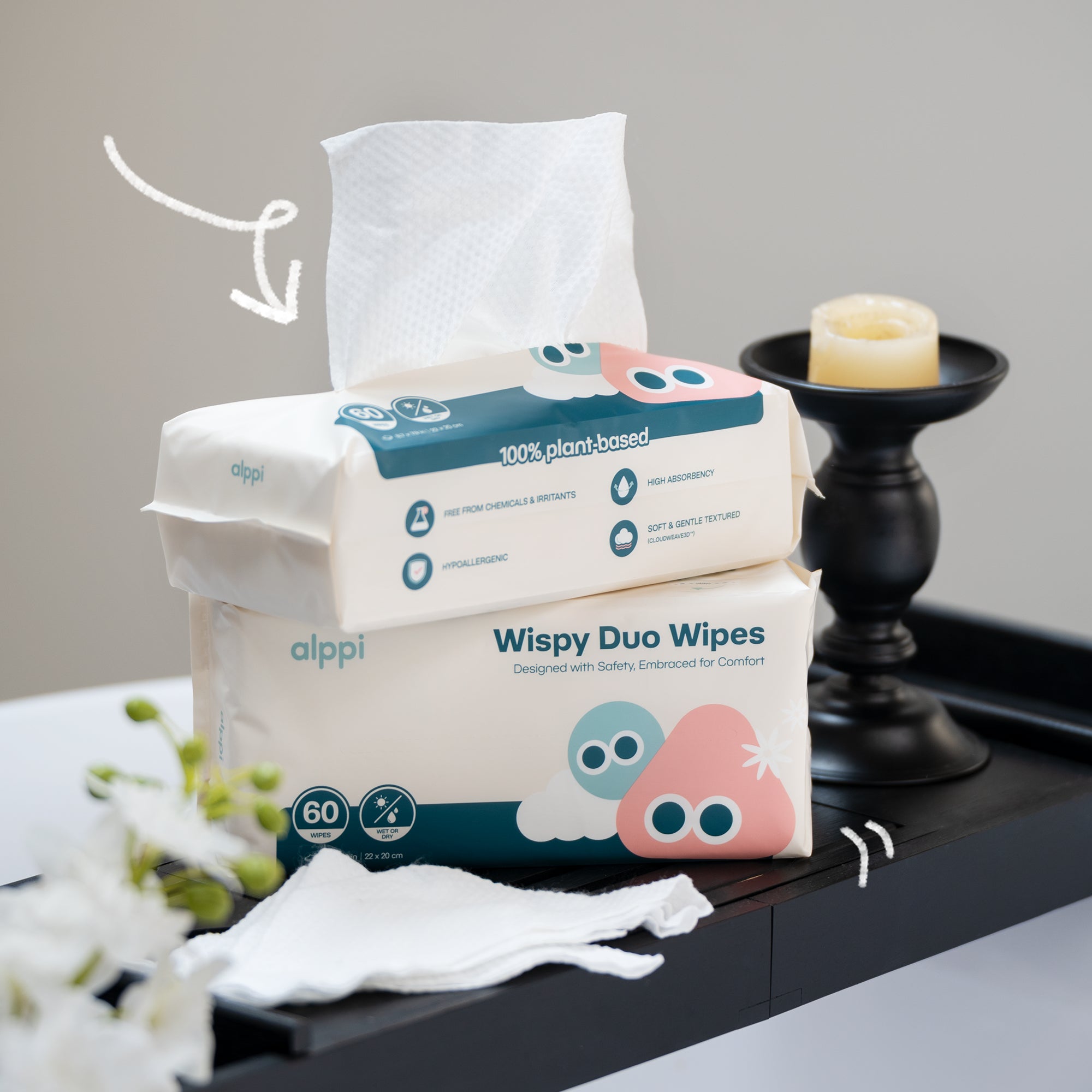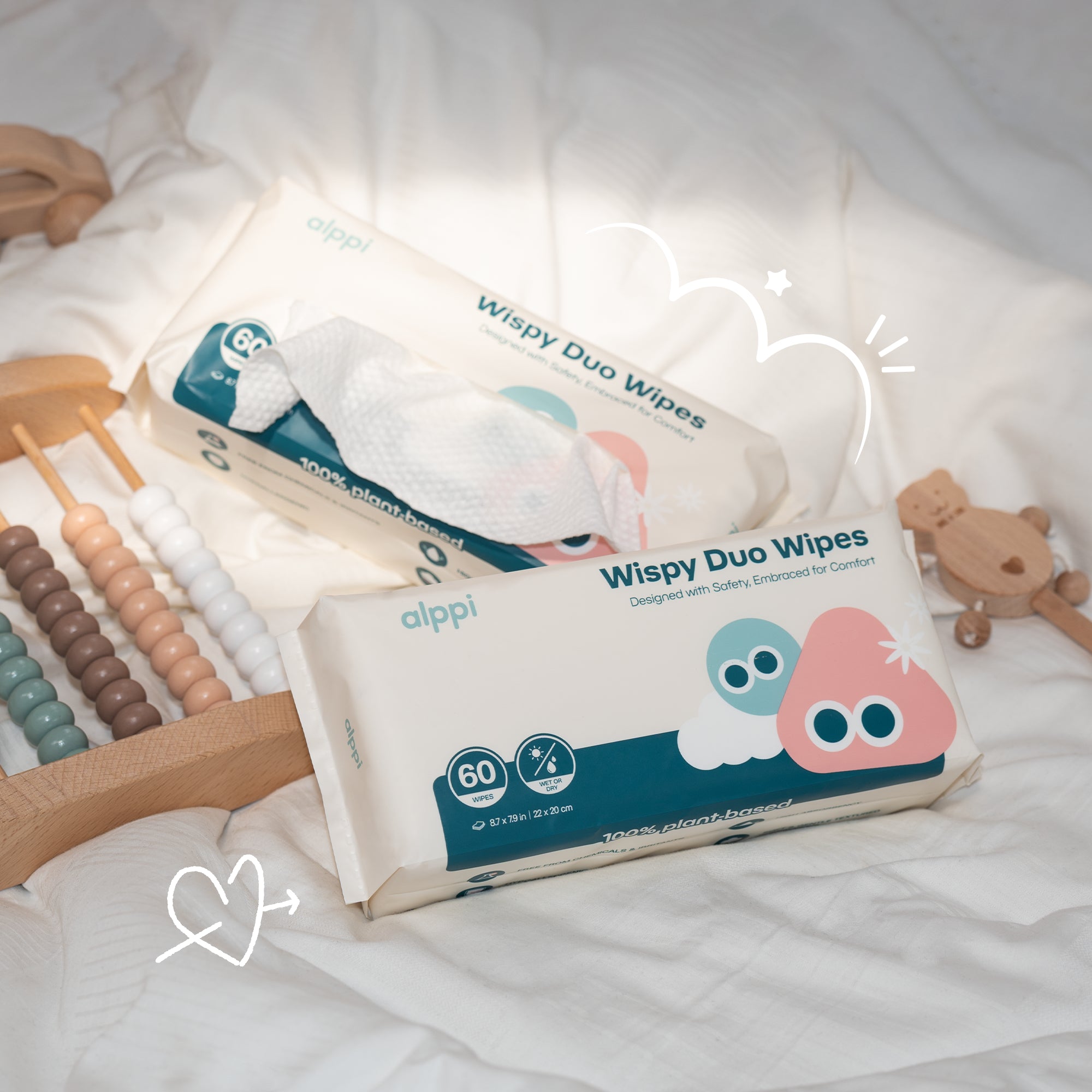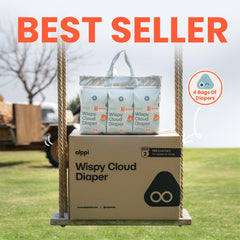If you're hunting for something gentler than standard baby wipes, dry baby wipes are worth a look. These cotton-based wipes skip the pre-added liquid and chemicals, giving you a blank slate for your baby's care.
Just add water or your own cleaning mix to dry baby wipes, and you control exactly what touches your baby's skin. That's a relief if your little one breaks out in rashes or has extra-sensitive skin that doesn't get along with the usual wet wipes.
Figuring out how to use dry baby wipes the right way can help you dodge skin irritation and make cleanup less of a chore. Let's get into what these wipes are made of, how to use them for diaper changes and other messes, and some real-world tips to keep your baby comfy and clean.
Keep things simple and gentle with our Disposable Dry Wipes. Perfect for quick cleanups, diaper changes, and everyday baby care.
What Are Dry Baby Wipes And Why Choose Them

Dry baby wipes are basically simple cotton cloths, no moisture or chemicals added. They let you decide what goes on your baby's skin and can be a better value than the usual wet wipes.
Understanding The Difference Between Dry And Wet Wipes
Dry baby wipes use 100% cotton and arrive totally dry. You add water or your own solution when it's time to clean up.
Wet baby wipes come pre-moistened with water and a mix of preservatives and other stuff—just grab and use.
Key differences:
- Materials: Dry wipes stick with pure cotton, while wet wipes often mix in synthetic fibers like rayon
- Chemicals: Dry wipes skip additives, wet wipes have preservatives and scents
- Size: Dry wipes tend to be bigger—usually 8x8 inches
- Durability: Dry wipes can be rinsed and reused a few times in one session
Even water wipes and so-called "best" baby wipes usually have some preservatives. With dry wipes, you get to decide what goes on your baby's skin.
Use dry wipes with just water or whip up your own gentle solution. It puts you in control.
Key Benefits Of Using Dry Baby Wipes
Dry wipes are gentler on delicate skin—no harsh chemicals or preservatives. Add only what your baby needs.
Cost savings are real. One dry wipe can take the place of three or four regular baby wipes during a diaper change. That means fewer trips to buy more.
Better for the environment too, since cotton breaks down naturally. Regular baby wipes often have plastic fibers that stick around for ages.
More versatile than wet wipes. Use them dry for little spills or wet for diaper duty. They double as washcloths, burp cloths, or even makeup removers if you're in a pinch.
Stronger and more durable—they don't fall apart when you need them most.
If you like DIY, you can make your own cleaning solution with basic stuff like castile soap and water. It saves money compared to buying fancy wipes all the time.
Less waste since you use fewer wipes per change, and the bigger size covers more ground.
When To Use Dry Wipes Vs. Pre-Moistened Wipes
Grab dry wipes for diaper changes at home, where adding water is easy. They're especially helpful for babies with rashes or eczema.
Cloth diaper fans get the most out of dry wipes. Toss them in with the laundry or use as biodegradable liners.
They're great for cleaning faces and hands daily. Just add water—no need for extra chemicals.
Pre-moistened wipes are handier for quick cleanups on the go, especially when water's not around.
Traveling? Wet wipes might be easier, since dry wipes need a bit of prep.
Use dry wipes for runny noses and drool, especially during teething. They're softer than tissues and less likely to irritate.
Mealtime messes are no match—just rinse and reuse to clean faces, hands, and high chairs.
In public restrooms, you might still reach for water wipes, but dry wipes really shine when you have access to clean water and want to be gentle.
How To Use Dry Baby Wipes Step By Step

Dry baby wipes are simple: add water or cleaning solution before using. You get to decide what touches your baby's skin.
Preparing The Wipe For Use
Grab a dry wipe from the pack. It should feel soft and smooth.
Moisten it with warm water—either dip it in a bowl or spray water right on.
Don't soak it through. Aim for damp, not dripping.
If you want, mix up a homemade solution in a spray bottle:
- 1 cup warm water
- 1 tablespoon baby oil
- 1 tablespoon gentle baby soap
Spray a couple pumps onto the wipe. It helps with cleaning and keeps skin protected.
Test the temperature on your wrist first. It should feel comfortably warm—not hot.
Using Dry Wipes For Diaper Changes
Open the dirty diaper, but leave it under your baby. Use the clean parts to wipe away most of the mess.
Take your moistened wipe and clean from front to back—especially important for baby girls to avoid infections.
For boys: Gently wipe around the penis and testicles. Lift the scrotum to get underneath.
For girls: Gently clean between the folds, always wiping from the vagina toward the bottom.
Usually, one wipe is enough for the diaper area. If needed, rinse the same wipe and keep going.
Dry wipes hold up better than most wet wipes. Rinse and reuse during the same diaper change if you like.
Cleaning Baby's Face, Hands, And Body
Use a fresh dry wipe with just water for faces. Skip any cleaning solutions near eyes or mouth.
Gently wipe from the inside corner of the eye out. Use a clean spot for each eye.
Dab around the nose and mouth—no need to scrub on delicate skin.
For hands, wipe each finger and between them. Since babies love putting hands in their mouths, stick to water only.
For the rest of the body, use the same wipe for bigger areas. Cotton holds up even when wet.
They're handy for spit-up, drool, and food messes too.
Adding Water Or Baby Lotion For Extra Comfort
Plain warm water is safest for newborns and sensitive skin. It cleans without causing problems.
If you want extra moisture, add a drop or two of baby lotion to the wipe.
Skip these ingredients:
- Strong fragrances
- Alcohol
- Harsh chemicals
For diaper rash, just use water. Extras could make it worse.
Some parents add a drop of baby oil for extra glide and skin protection.
Always test anything new on a small patch of skin. Wait a day to see if there's a reaction.
Keep water and solutions at room temp or slightly warm. Cold wipes can be a shock for your baby.
Tips For Safe And Effective Use
To use dry baby wipes safely, pick the right ones for your baby's skin, store them clean, and think about how you'll reuse or toss them.
Choosing The Right Material For Sensitive Skin
100% cotton dry wipes are best for sensitive skin—they're soft and natural, with no harsh extras.
Look for "hypoallergenic" on the label. These are less likely to cause reactions. If your baby has sensitive skin, avoid wipes with synthetic fibers.
Check the label to make sure they're free from:
- Fragrances
- Dyes
- Chemical treatments
- Bleach
Try new wipes on a small spot first. Give it a day to see if any redness shows up.
Organic cotton wipes cost a bit more, but they're even safer for the super-sensitive. No pesticides or chemicals in the cotton.
Proper Storage And Hygiene Practices
Keep dry wipes in a cool, dry spot out of sunlight. Heat and moisture can invite bacteria or mold.
Use resealable bags or containers to keep them dust-free. Clean containers help keep germs away.
Wash your hands before grabbing dry wipes. That way, you're not transferring germs.
Consider separate wipes for different uses:
- Face and hands
- Diaper area
- General cleaning
If wipes start to smell, look dirty, or feel rough, toss them. Don't use wipes that have been wet for more than a few hours unless you plan to wash them right away.
Use up opened packs within 6 months so they stay fresh and soft.
Eco-Friendly Ways To Dispose Or Reuse Dry Wipes
Wash and reuse cotton dry wipes up to 50 times before they wear out. Saves money and cuts down on trash.
Sort used wipes based on how dirty they are:
- Light mess: Rinse and air dry
- Heavy mess: Wash in hot water with detergent
- Diaper mess: Wash separately in hot water
Compost 100% cotton wipes when they're done. Cut them up first so they break down faster.
Try not to toss reusable wipes in the trash. It's a waste—and not great for the planet.
Set up a basic wash routine. Keep a lidded bucket by the changing area for dirty wipes, and wash every couple of days with the rest of your laundry.
Pair your wipes with our Organic Baby Diapers for the ultimate soft, eco-friendly diapering routine.
Conclusion: How To Use Dry Baby Wipes
Dry baby wipes make baby care simpler, safer, and more flexible. Whether you use them dry for quick cleanups or add water for diaper changes, they give you full control over what touches your baby’s skin.
They’re gentle, eco-friendly, and perfect for parents who want a cleaner, more natural routine. With dry wipes, you can handle any mess—big or small—without worry.
Want to plan ahead for your baby’s needs? Check out our next guide: How Many Baby Wipes Do I Need?
Frequently Asked Questions
Parents always have questions about using dry wipes. Here are some basics to help you get started.
How do you use dry wipes?
Use dry wipes as-is for quick spills or light messes. Add water or a gentle solution for diaper changes or cleaning your baby’s face and hands. You control the moisture—wet the wipe first or spray directly on your baby’s skin.
Can you add water to dry baby wipes?
Yes! Just add plain water or a mild homemade solution. Spray it on the wipe or your baby’s skin—either way works.
Do you wet wipe or dry wipe first?
It depends on the mess. Use a wet wipe for diaper changes and a dry one for crumbs or dust. Some parents start dry, then finish with a wet wipe for a better clean.
What is the purpose of dry wipes?
Dry wipes let you choose what touches your baby’s skin. They’re chemical-free, gentle, and reusable. Perfect for diaper changes, sticky hands, and quick cleanups.
